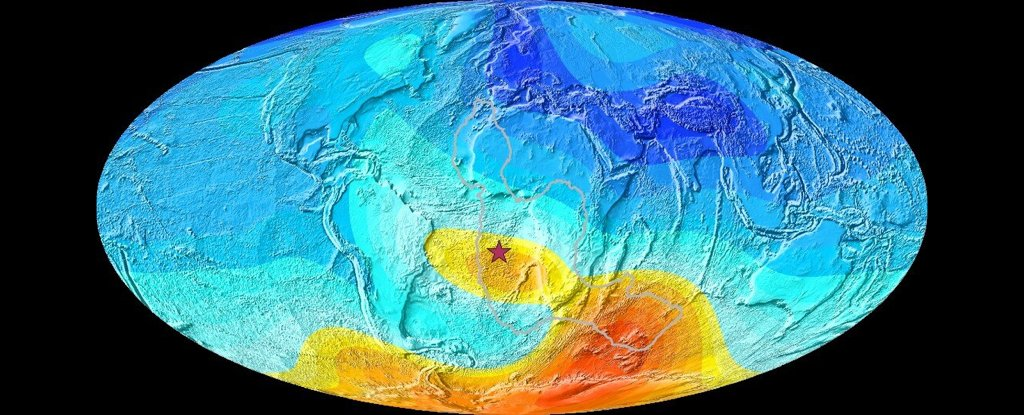A peculiar irregularity in the Earth’s magnetic field, characterized by a vast expanse of decreased magnetic intensity hovering over the area between South America and southwest Africa, is presently under NASA’s active surveillance.

For years, scientists, especially those at NASA, have been captivated and worried by the South Atlantic Anomaly – a vast and evolving event. NASA’s research has focused on this phenomenon, as their spacecraft and satellites are highly susceptible to the reduced magnetic field intensity within the anomaly, exposing them to charged solar particles.
The South Atlantic Anomaly is akin to a “pothole in space” or a “dent” in the Earth’s magnetic field, and while it does not typically impact life on Earth, orbital spacecraft, including the International Space Station, pass directly through the anomaly as they orbit at low-Earth altitudes.
When spacecraft pass through the South Atlantic Anomaly, the weakened magnetic field inside the anomaly can cause high-energy protons from the Sun to strike and potentially disrupt technological systems onboard satellites, resulting in short-circuits and malfunctions.
These random hits may usually only produce low-level glitches, but they do carry the risk of causing significant data loss, or even permanent damage to key components – threats obliging satellite operators to routinely shut down spacecraft systems before spacecraft enter the anomaly zone.
Mitigating those hazards in space is one reason NASA is tracking the SAA; another is that the mystery of the anomaly represents a great opportunity to investigate a complex and difficult-to-understand phenomenon, and NASA’s broad resources and research groups are uniquely well-appointed to study the occurrence.
“The magnetic field is actually a superposition of fields from many current sources,” geophysicist Terry Sabaka from NASA’s Goddard Space Flight Centre in Greenbelt, Maryland explained in 2020.
The primary source is considered to be a swirling ocean of molten iron inside Earth’s outer core, thousands of kilometers below the ground. The movement of that mass generates electrical currents that create Earth’s magnetic field, but not necessarily uniformly, it seems.
A huge reservoir of dense rock called the African Large Low Shear Velocity Province, located about 2,900 kilometers (1,800 miles) below the African continent, disturbs the field’s generation, resulting in the dramatic weakening effect – which is aided by the tilt of the planet’s magnetic axis.
“The observed SAA can be also interpreted as a consequence of weakening dominance of the dipole field in the region,” said NASA Goddard geophysicist and mathematician Weijia Kuang in 2020.
“More specifically, a localized field with reversed polarity grows strongly in the SAA region, thus making the field intensity very weak, weaker than that of the surrounding regions.”
While there’s much scientists still don’t fully understand about the anomaly and its implications, new insights are continually shedding light on this strange phenomenon.
For example, one study led by NASA heliophysicist Ashley Greeley in 2016 revealed the SAA is drifting slowly in a north-westerly direction.
It’s not just moving, however. Even more remarkably, the phenomenon seems to be in the process of splitting in two, with researchers in 2020 discovering that the SAA appeared to be dividing into two distinct cells, each representing a separate center of minimum magnetic intensity within the greater anomaly.
Just what that means for the future of the SAA remains unknown, but in any case, there’s evidence to suggest that the anomaly is not a new appearance.
A study published in July 2020 suggested the phenomenon is not a freak event of recent times, but a recurrent magnetic event that may have affected Earth since as far back as 11 million years ago.
If so, that could signal that the South Atlantic Anomaly is not a trigger or precursor to the entire planet’s magnetic field flipping, which is something that actually happens, if not for hundreds of thousands of years at a time.
Obviously, huge questions remain, but with so much going on with this vast magnetic oddity, it’s good to know the world’s most powerful space agency is watching it as closely as they are.
“Even though the SAA is slow-moving, it is going through some change in morphology, so it’s also important that we keep observing it by having continued missions,” said Sabaka.
“Because that’s what helps us make models and predictions.”



